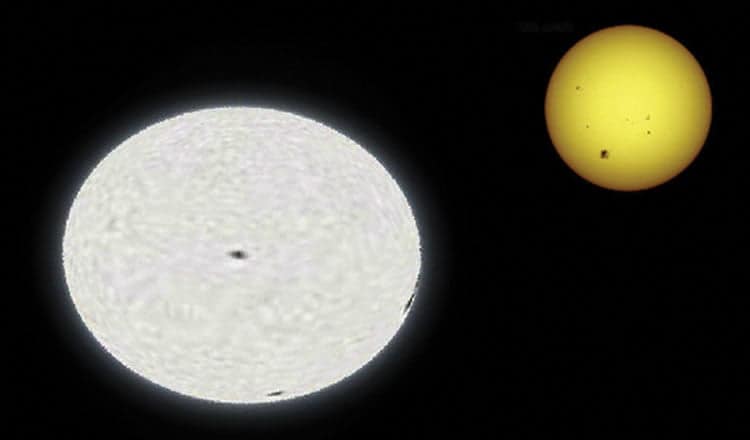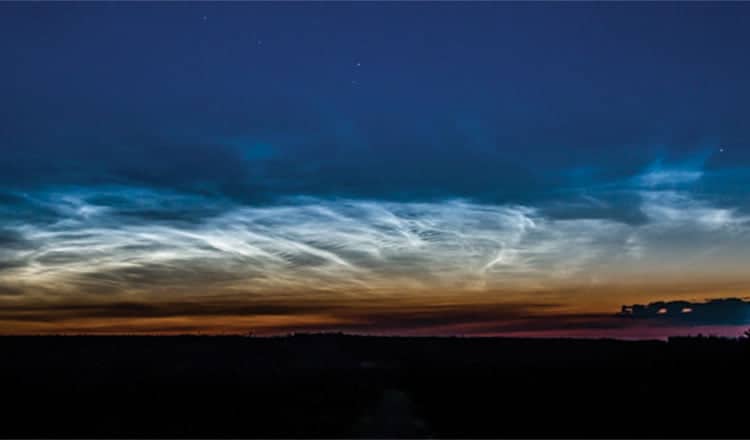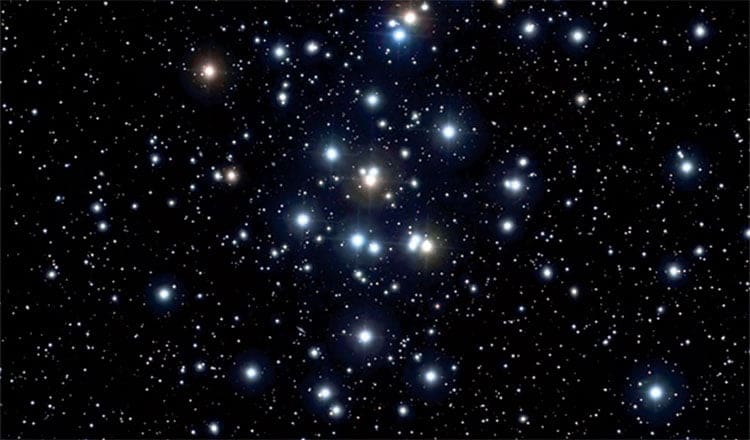Welcome to nightlife in the Yukon night skies.
For starters, let’s get acquainted with the night sky as we see it: directly overhead we find the familiar constellation of Auriga and Perseus.
Auriga is the home to a triple shot of open star clusters that are easily seen in binoculars.
Looking high overhead, we locate the bright star Capella, the brightest star anywhere in that region of the night sky.
Move your binoculars diagonally 45 degrees southeast and you will find your first star cluster, M38. The best way to describe the view in 10×50 binoculars is as a small loose cluster of stars, surrounded by a faint glowing cloud.
By moving your binoculars or telescope one binocular field of view to the southeast, M36 will slide into view. Move slowly, as this star cluster is only half as bright as M38 and 1,400 light years distant.
Of the few bright stars in this cluster, the brightest are about 360 times more luminous than our sun. Due to this star clusters position in the night sky, the view can be 3-D with the Milky Way as a background for this smattering of stars.
We save the best for last as we next visit open star cluster M37. This cluster is the opposite of what we just saw in M36. Rich with stars, with a brighter compressed core, makes this one of the night skies’ favourite open star clusters, also known as Galactic Clusters. In larger binoculars or small telescopes, the red star in the middle of the cluster looks exceptional as it rests in a field of bright-white, blue stars.
While we are checking out star clusters, we should take a quick peek at M34. This star cluster is often overlooked because the awesome Double Cluster is right nearby. The brightest star in the constellation of Perseus is called Mirfak. With a star chart, locate this star and move your binoculars south slowly toward the Pleiades Star Cluster.
Best viewed in binoculars, this star cluster offers a truly magnificent view. The stars are pure white points of light with distinct brightening at the core. There is a noticeable misty glow around the stars, which makes the view all the more impressive. Fainter and unresolved stars cause this glow.
Now, let’s move to the brightest star in the night sky, Sirius. To locate Sirius and the constellation of Canis Major, move your binoculars southeast from the constellation of Orion toward the horizon.
Move your binoculars about six or seven degrees down in a southeastern direction and, waiting to be discovered, is M41. This open star cluster can be glimpsed on a clear night with the unaided eye. As early as 325 B.C., Aristotle saw this cluster of stars, which covers an area as large as the full moon.
Using 7×50 binoculars, as many as two dozen stars can be easily seen. Using a spotting scope or telescope, 75 to 100 stars are now visible. And right in the middle of the star cluster is another giant red star. This red star is about 700 times brighter than our own sun, and is 2,350 light years distant.
Again, starting at Sirius, move your binoculars about 15 degrees (about three binocular fields) in an easterly direction. Here we find the open star cluster M47. Take your time and go slow when you are trying to locate this star cluster, as there are no bright, easy, guide stars nearby. You may have to do a little bit of scanning before you can locate this elusive gem. With clear skies and well-adapted night vision, this star cluster is visible, barley, to the unaided eye.
When you are viewing star cluster M47 in binoculars, you can expect to see about 15 or so blue-white stars that look like sapphires, set against a black velvet background making for a most-impressive view. The star field surrounding this star cluster is rich in stars and, off to the west of this cluster, a bright orange star adds even more mystery to the view.
Right beside M47 lies star cluster M46, a mere 1.3 degrees to the left. In smaller binoculars, only a soft glow will be seen. In larger binoculars and small telescopes, up to a dozen or more stars can be seen with a soft surrounding glow.
Not visible in binoculars or small telescopes is a planetary nebula, NGC 2438. In a 10-inch or larger telescope, this nebula appears as a pale blue-white round shell that is bright and fairly small. This nebula actually sits in front of the star cluster making for a most impressive sight if you happen to own a 10-inch or larger telescope.
Winter offers some of the best night sky viewing in the Yukon, so take some time, a copy of Sky News Magazine, hot beverage of choice, chair, your binoculars or telescope, and head outside and enjoy the view.
Clear Skies, from James “Deep Sky” Cackette.
James “Deep Sky” Cackette can be reached at [email protected]. See his photo adventures on Facebook at Yukon Night Skies.




